Tomás Saraceno’s aerosolar sculptures take flight in Miami
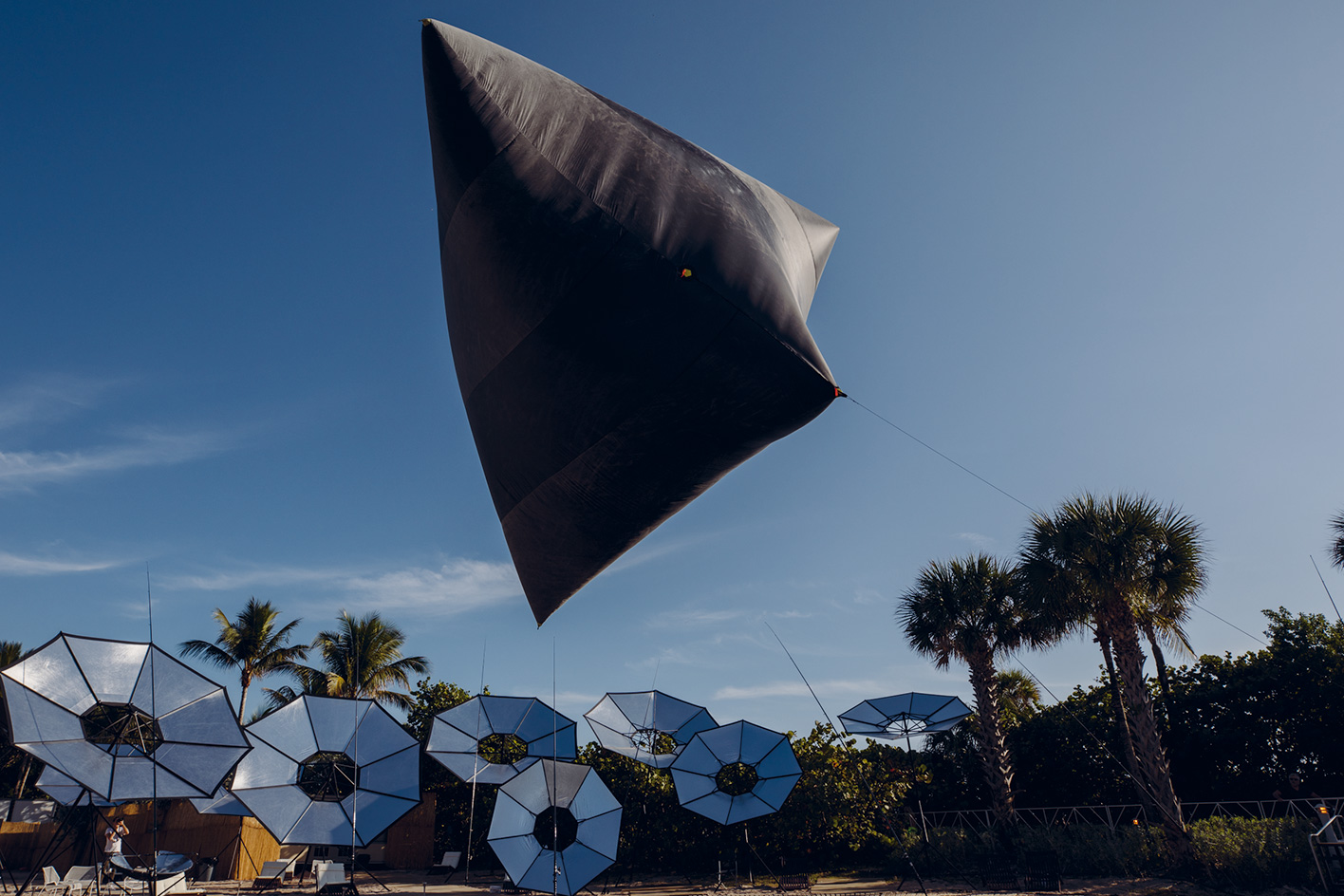
The unveiling of Tomás Saraceno’s latest artwork during Art Basel Miami got off to an inauspicious start when inclement weather conditions forced the inaugural flight demonstration to be postponed. And yet, it only served to highlight the pressing environmental issues that he has been exploring in his multidisciplinary experiments with the Aerocene Foundation. ‘That’s the best beginning for a project on the weather dependancy that we’re all trying to deal with,’ the artist said at the opening.
Situated along Miami Beach’s oceanfront across from Collins Park, Albedo comprises 40-odd reflective, out-turned umbrellas arranged in a large-scale temporal pavilion. Viewed from above, the experimental sundial forms a striking geometric constellation, while solar energy is used to lift aerosolar sculptures into the sky. The artist’s investigations extend into daily performances, solar cooking events and community roundtables. Visitors are encouraged to get hands-on – they can borrow, build and share a tethered-flight starter backpack which enables anyone to launch a portable Aerocene sculpture using open-source instructions.
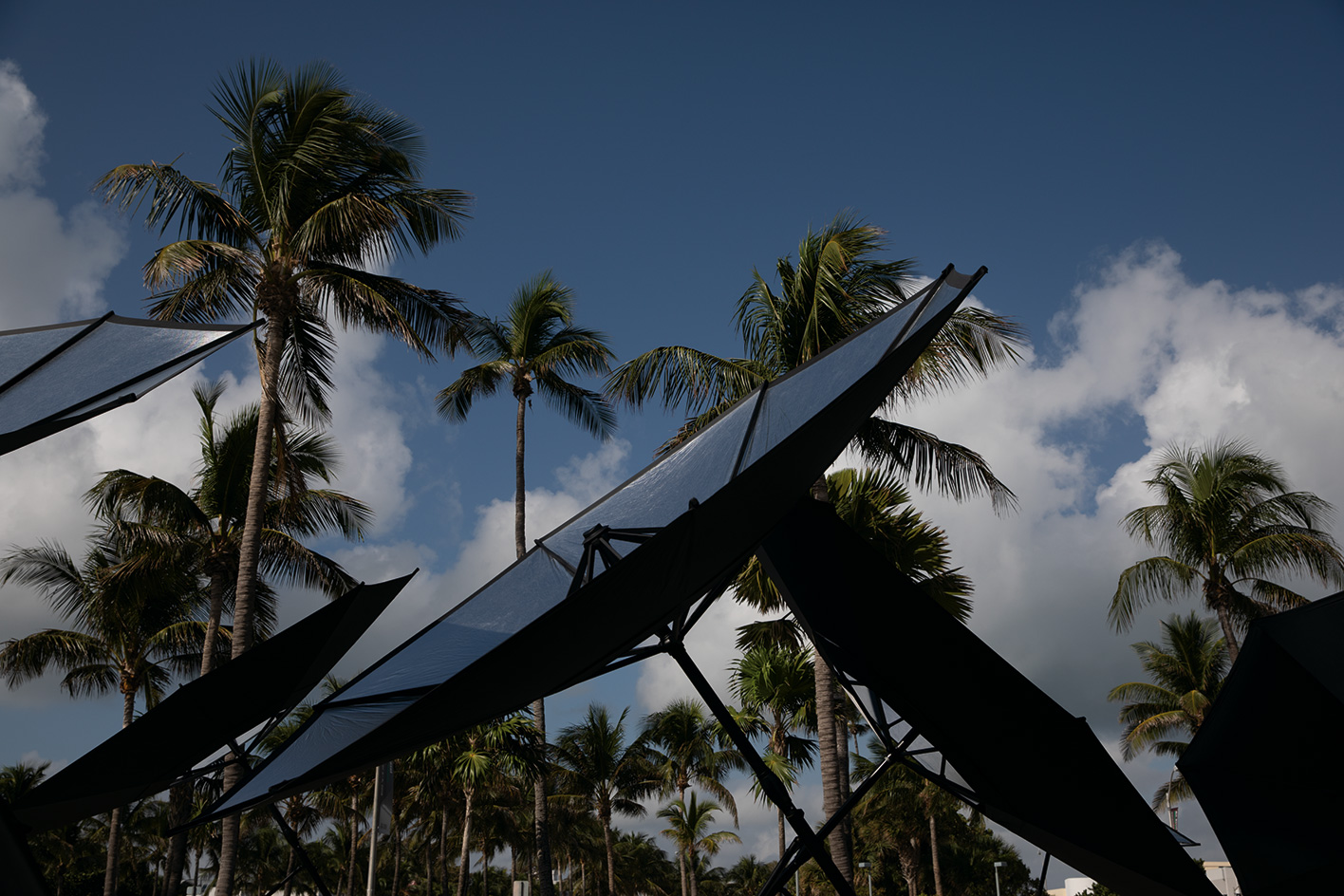
The artwork takes its name from the Latin term meaning whiteness, referring to amount of solar radiation reflected by a surface in comparison to the total amount it receives. ‘We discovered recently that the colour of the surface that these sculptures fly over influences it a lot. Usually when it’s a white surface you get a lot of reflection – it goes back to the sculpture itself and you have much more lift,’ says the artist and recent Wallpaper* Guest Editor. ‘It means when we perform human flights over a white surface you may be able to lift [up to] 200kg. When it’s not so reflective you can’t lift even one person.’
Audemars Piguet helped bring the Berlin-based artist’s vision to life in the same site that has previously hosted three forward-thinking art installations by the Swiss watchmaker. Like the Aerocene project, these earlier ventures by Sun Xun, Lars Jan and Theo Jansen have probed our ecological future with interactive installations that have often been achieved with the help of scientists and technologists.
Albedo springs from Saracéno’s long-term global investigation into achieving ‘an ethical collaboration with the atmosphere’ through fossil fuel-free movement. His research been exhibited globally, from Korea to the US and most recently, at the Palais de Tokyo in Paris where has taken over the entirety of its 13,000 sq m exhibition spaces for the fourth edition of the institution’s cartes blanche.

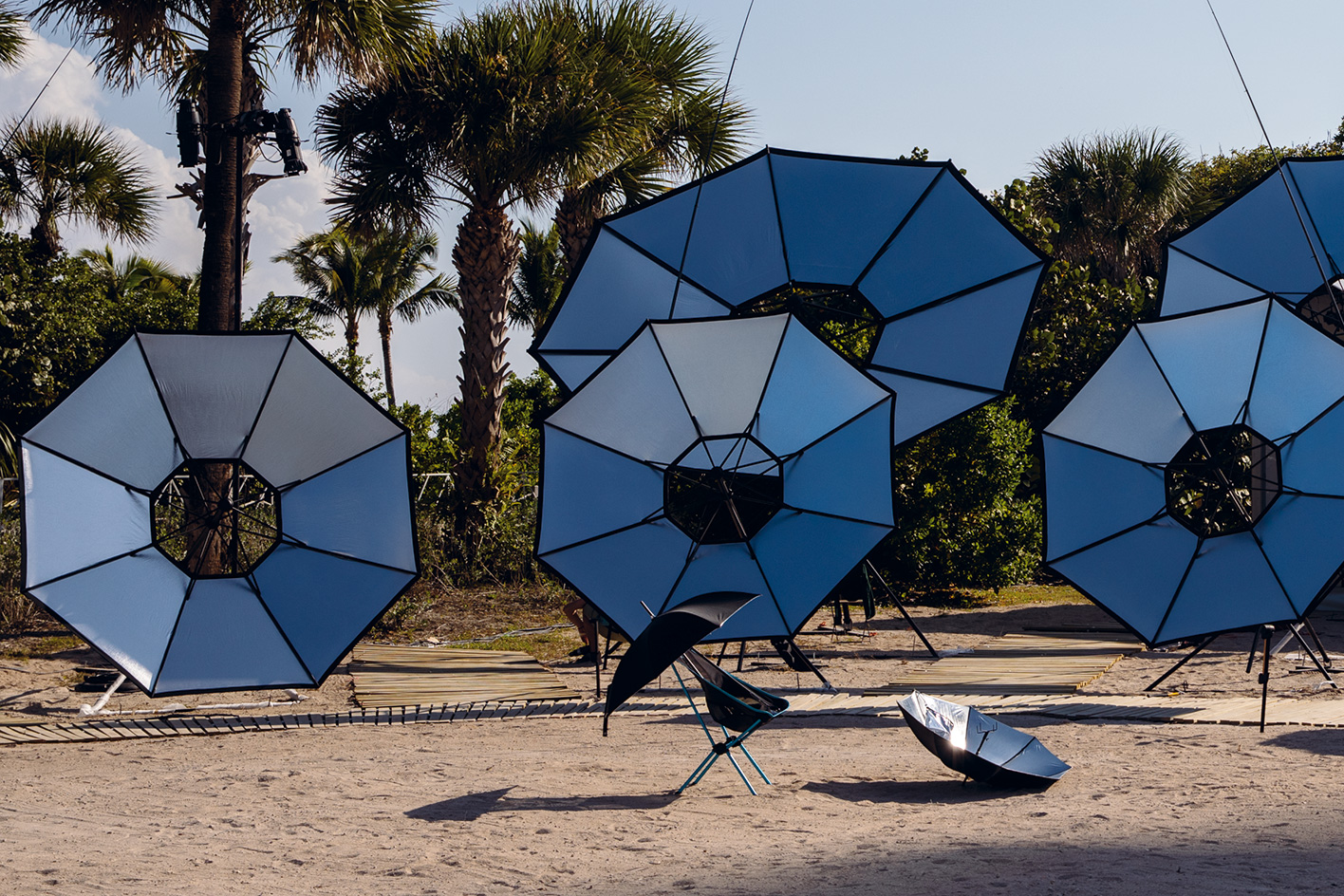

INFORMATION
Albedo is on view until 9 December. For more information, visit Tomás Saraceno’s website and the Aerocene website
ADDRESS
Oceanfront between 21st and 22nd Streets
Miami Beach
Receive our daily digest of inspiration, escapism and design stories from around the world direct to your inbox.
-
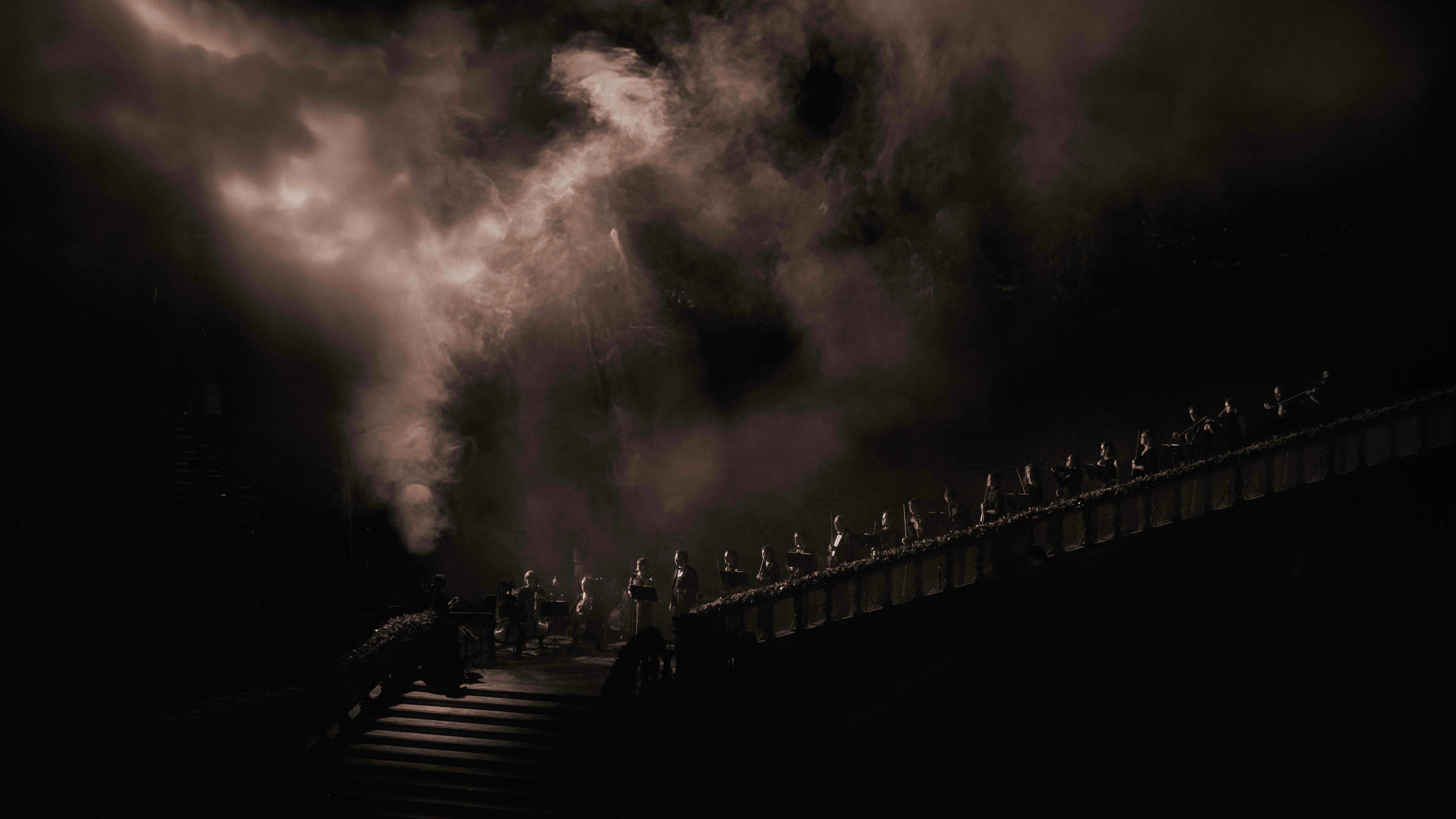 Alexander Wessely turns the Nobel Prize ceremony into a live artwork
Alexander Wessely turns the Nobel Prize ceremony into a live artworkFor the first time, the Nobel Prize banquet has been reimagined as a live artwork. Swedish-Greek artist and scenographer Alexander Wessely speaks to Wallpaper* about creating a three-act meditation on light inside Stockholm City Hall
-
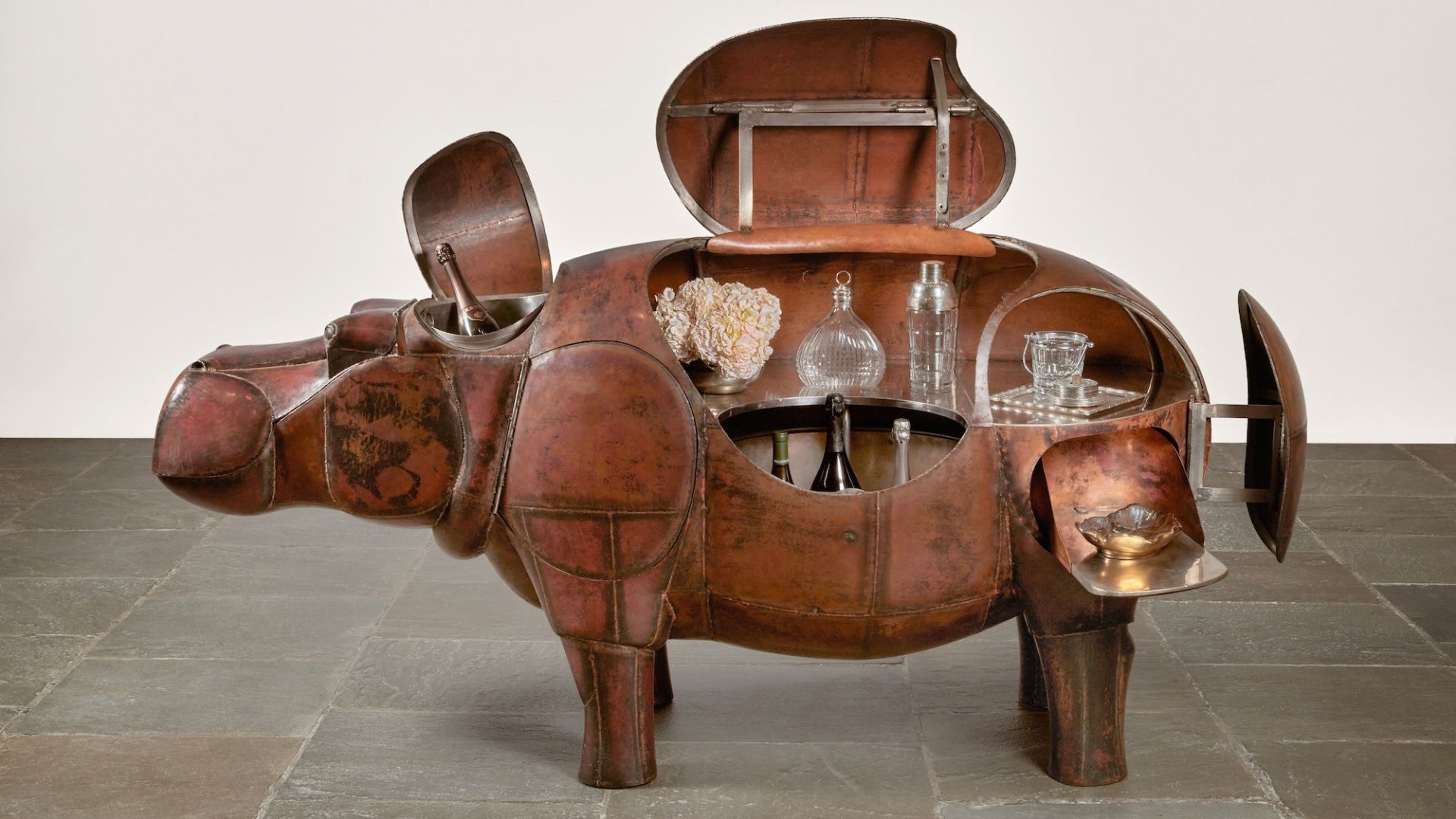 At $31.4 million, this Lalanne hippo just smashed another world auction record at Sotheby’s
At $31.4 million, this Lalanne hippo just smashed another world auction record at Sotheby’sThe jaw-dropping price marked the highest-ever for a work by François-Xavier Lalanne – and for a work of design generally
-
 NYC’s first alcohol-free members’ club is full of spirit
NYC’s first alcohol-free members’ club is full of spiritThe Maze NYC is a design-led social hub in Flatiron, redefining how the city gathers with an alcohol-free, community-driven ethos
-
 Nadia Lee Cohen distils a distant American memory into an unflinching new photo book
Nadia Lee Cohen distils a distant American memory into an unflinching new photo book‘Holy Ohio’ documents the British photographer and filmmaker’s personal journey as she reconnects with distant family and her earliest American memories
-
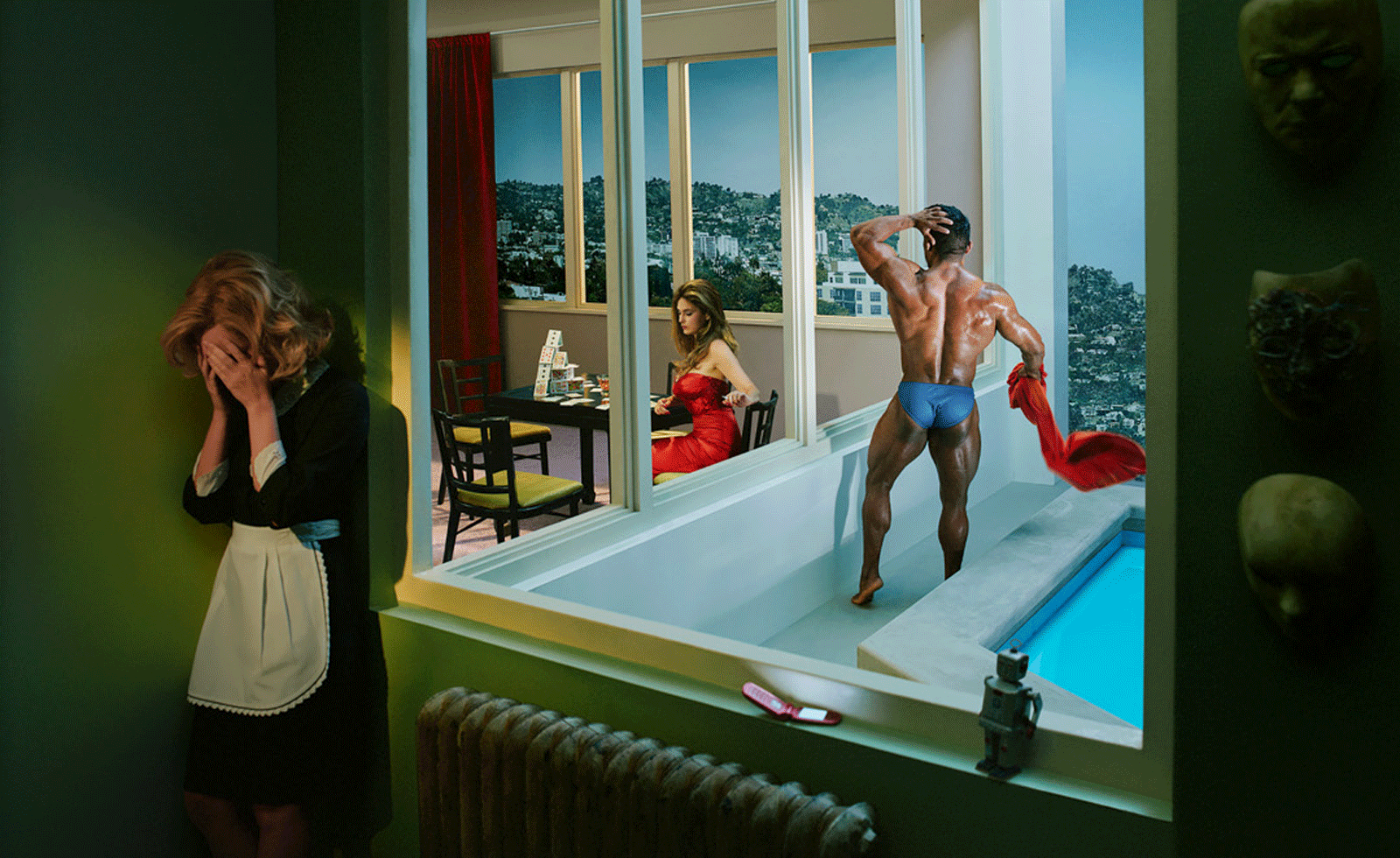 What to see at Art Basel Miami Beach 2025 – nine brilliant booths
What to see at Art Basel Miami Beach 2025 – nine brilliant boothsThe buzzy Miami art fair (5-7 December) will bring together more than 280 leading international galleries and a packed week of pop-ups and parties – start with these must-see booths
-
 Ed Ruscha’s foray into chocolate is sweet, smart and very American
Ed Ruscha’s foray into chocolate is sweet, smart and very AmericanArt and chocolate combine deliciously in ‘Made in California’, a project from the artist with andSons Chocolatiers
-
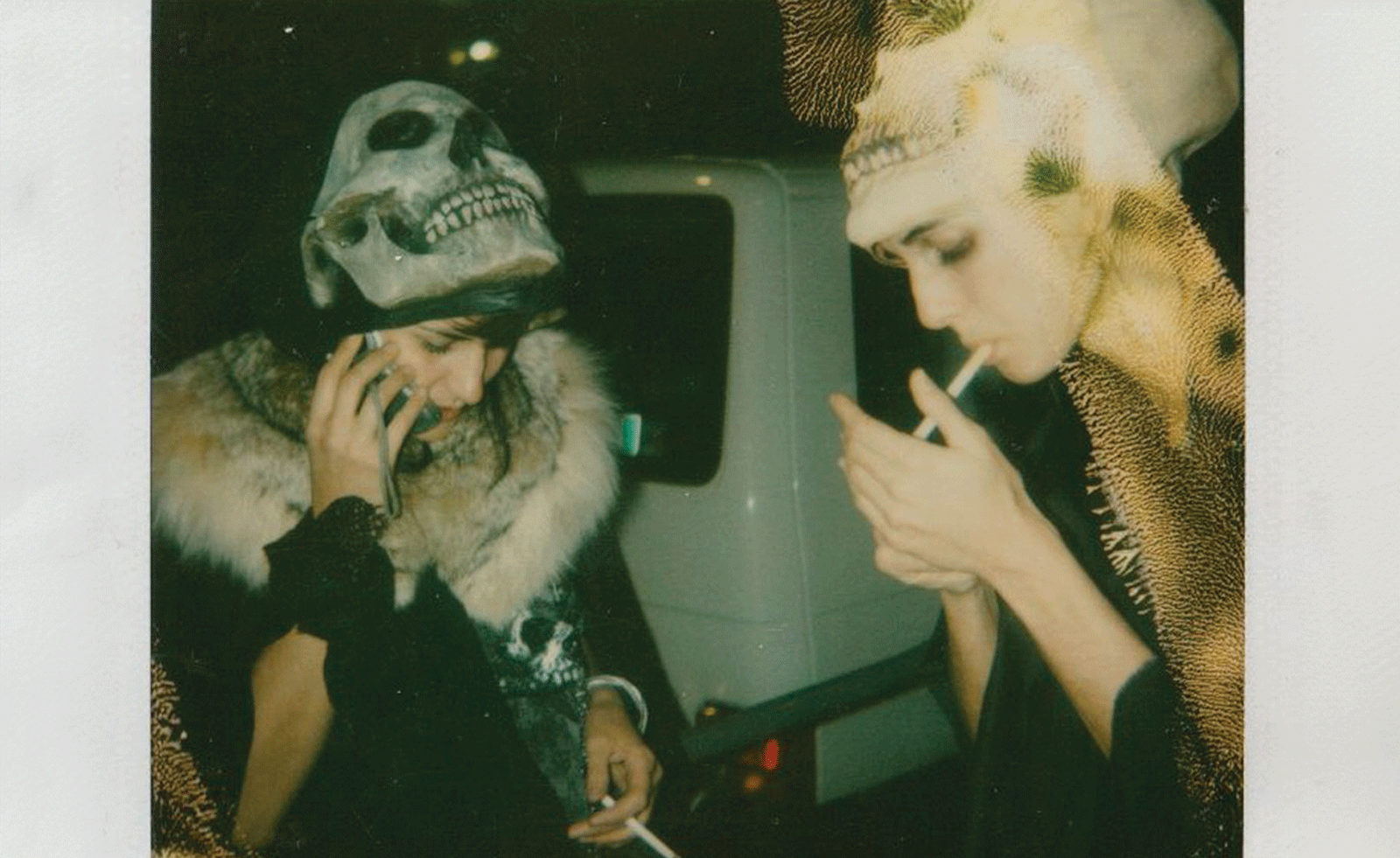 Ten things to see and do at Art Basel Paris 2025
Ten things to see and do at Art Basel Paris 2025Art Basel Paris takes over the city from 24-26 October. Here are the highlights, from Elmgreen & Dragset to Barbara Kruger and Dash Snow
-
 Jamel Shabazz’s photographs are a love letter to Prospect Park
Jamel Shabazz’s photographs are a love letter to Prospect ParkIn a new book, ‘Prospect Park: Photographs of a Brooklyn Oasis, 1980 to 2025’, Jamel Shabazz discovers a warmer side of human nature
-
 The Hammer Museum in Los Angeles launches the seventh iteration of its highly anticipated artist biennial
The Hammer Museum in Los Angeles launches the seventh iteration of its highly anticipated artist biennialOne of the gallery's flagship exhibitions, Made in LA showcases the breadth and depth of the city's contemporary art scene
-
 Thomas Prior’s photography captures the uncanny fragility of American life
Thomas Prior’s photography captures the uncanny fragility of American lifeA new book unites two decades of the photographer’s piercing, uneasy work
-
 Central Park’s revitalised Delacorte Theater gears up for a new future
Central Park’s revitalised Delacorte Theater gears up for a new futureEnnead Architects helmed an ambitious renovation process that has given the New York City cultural landmark a vibrant and more accessible future